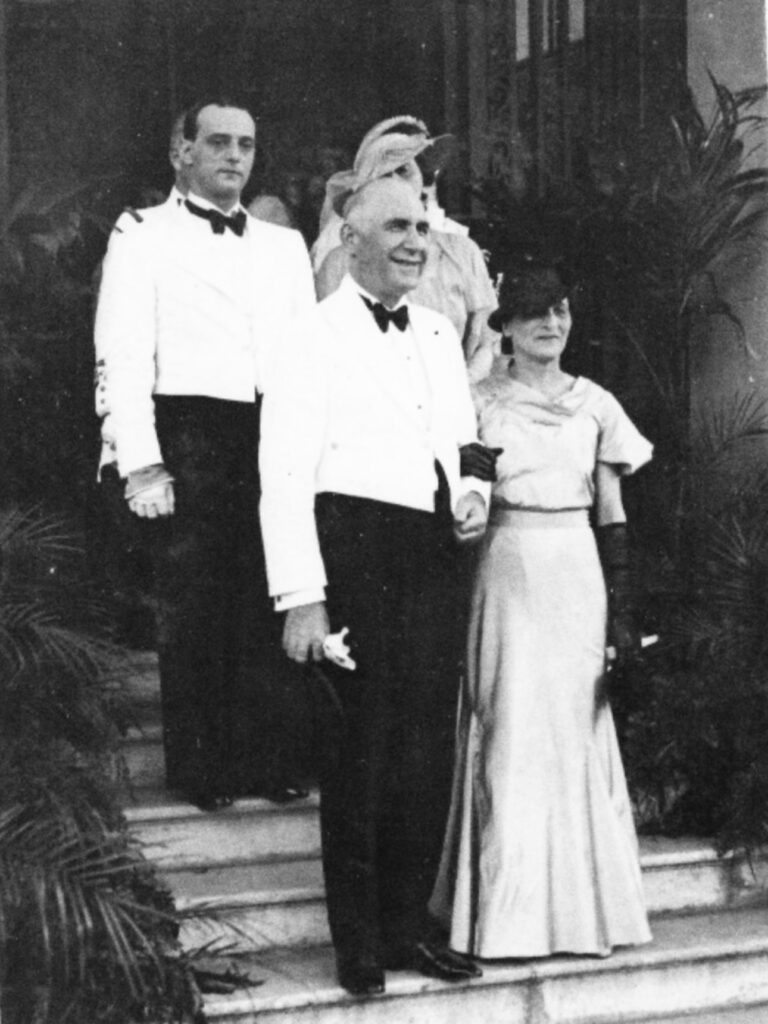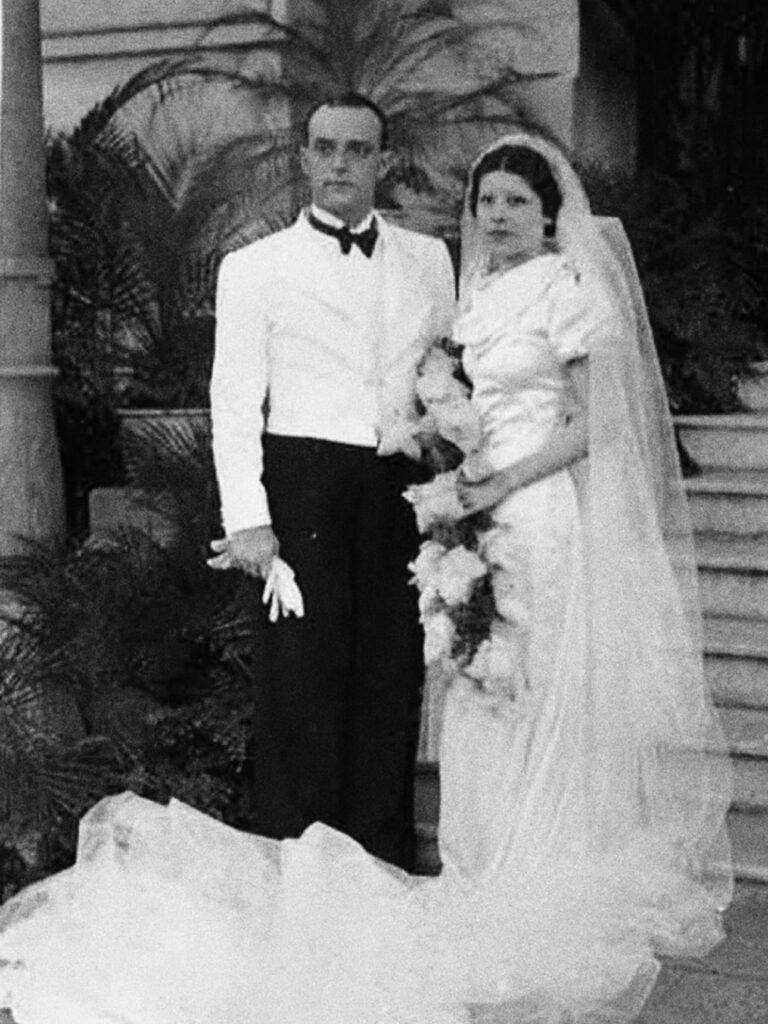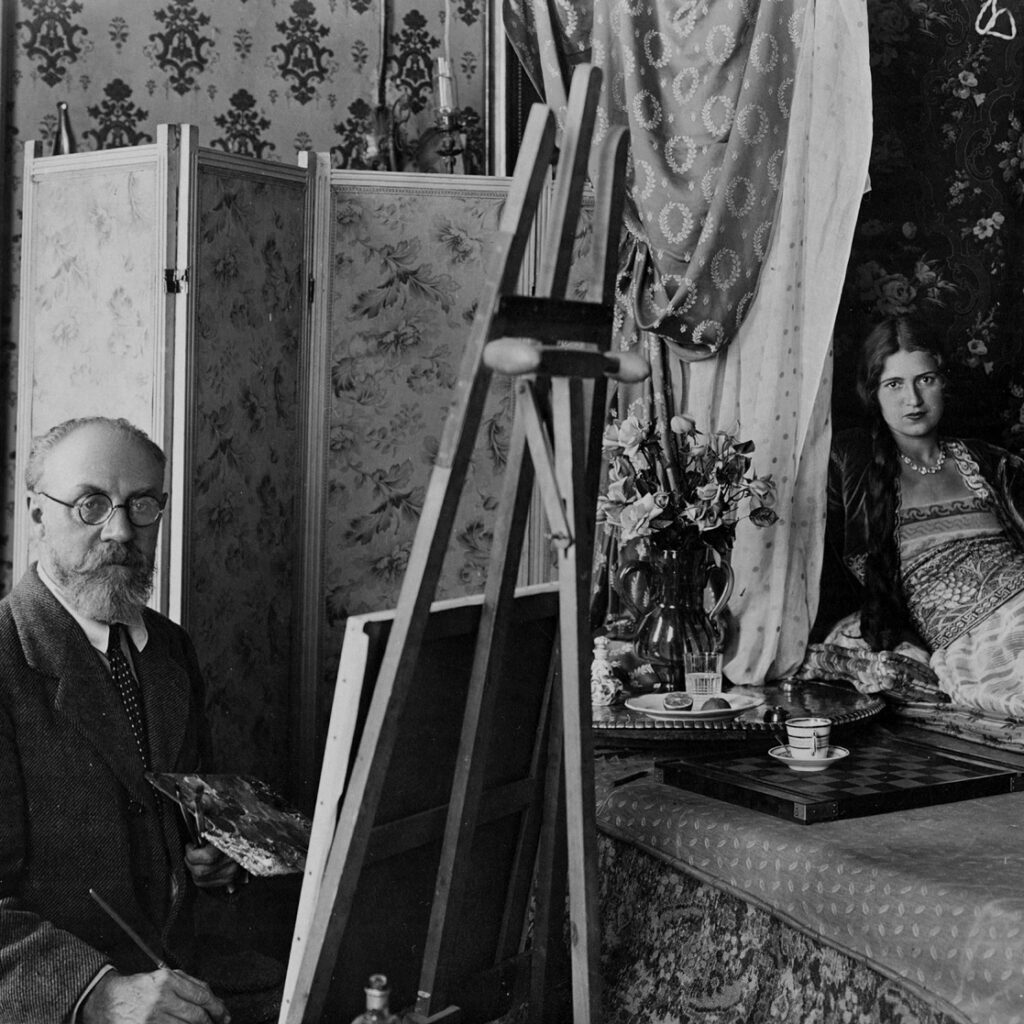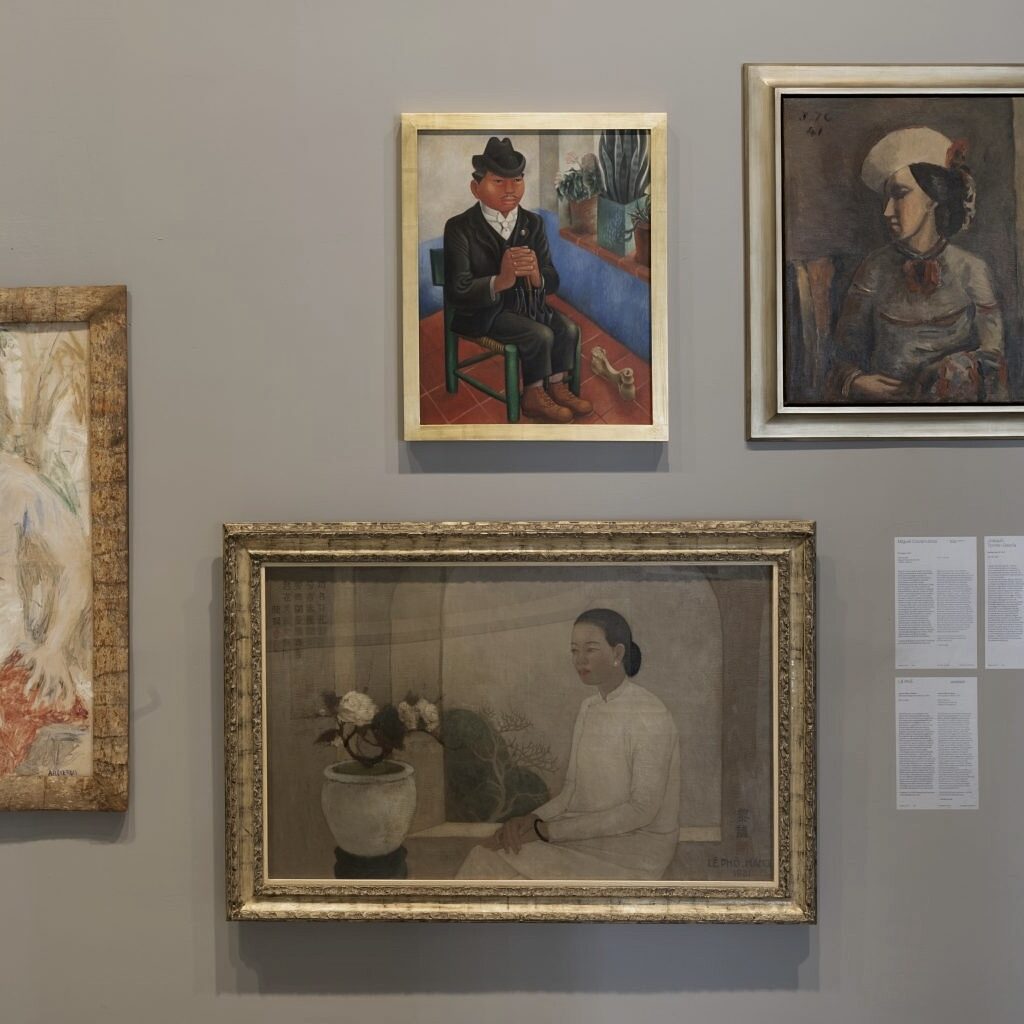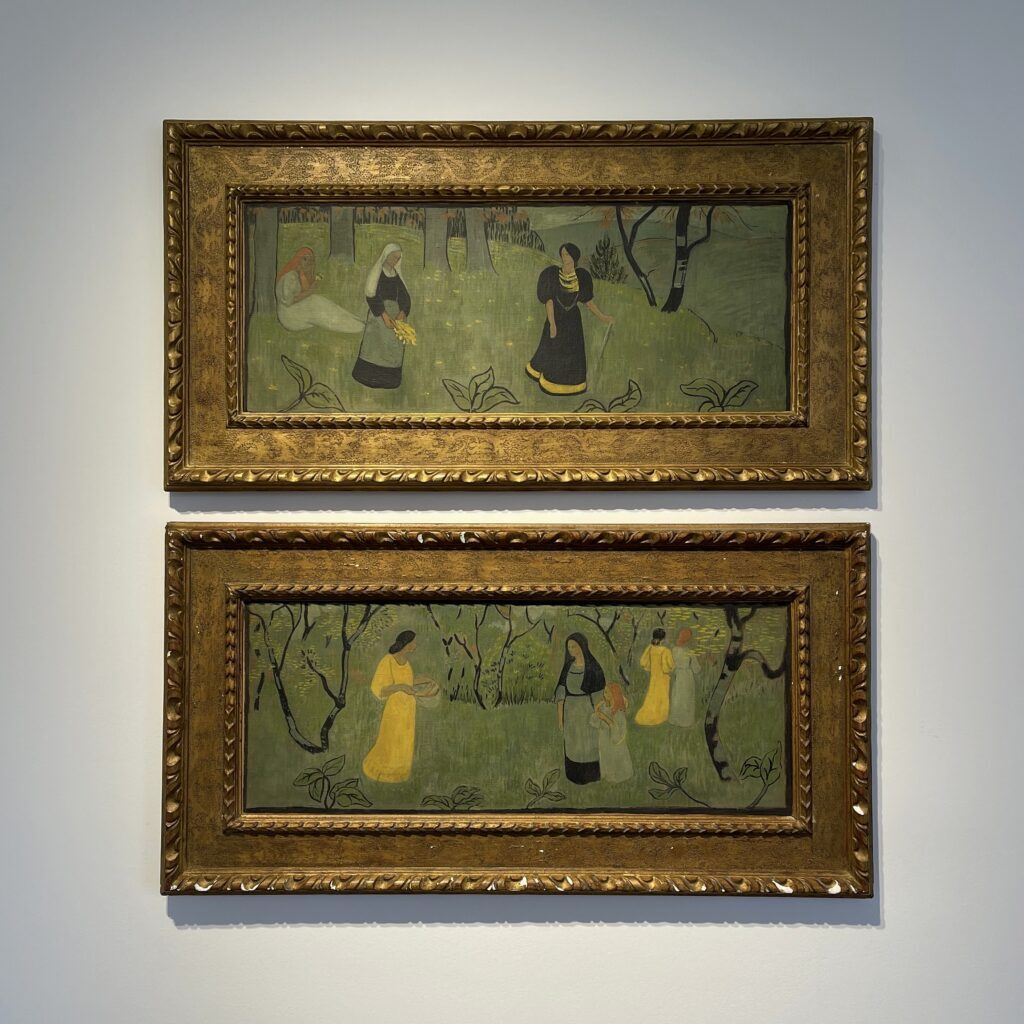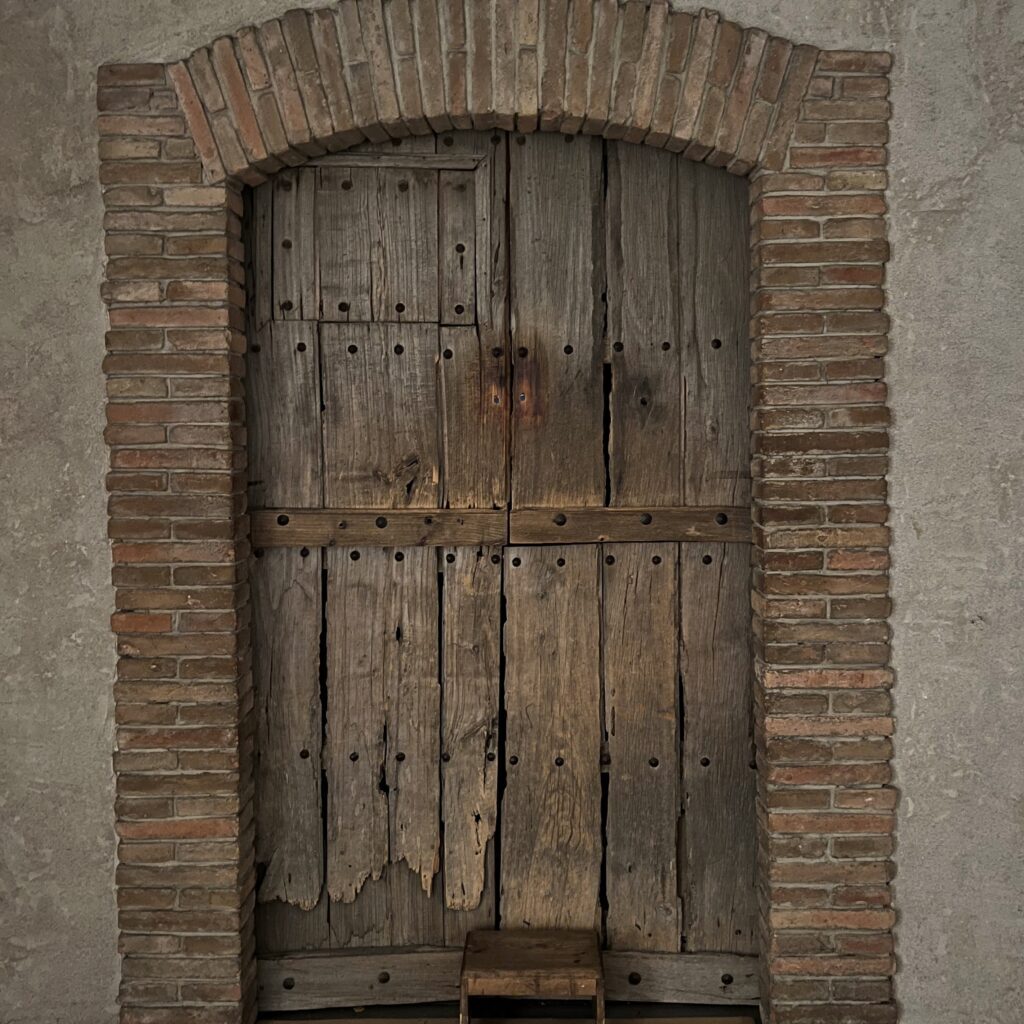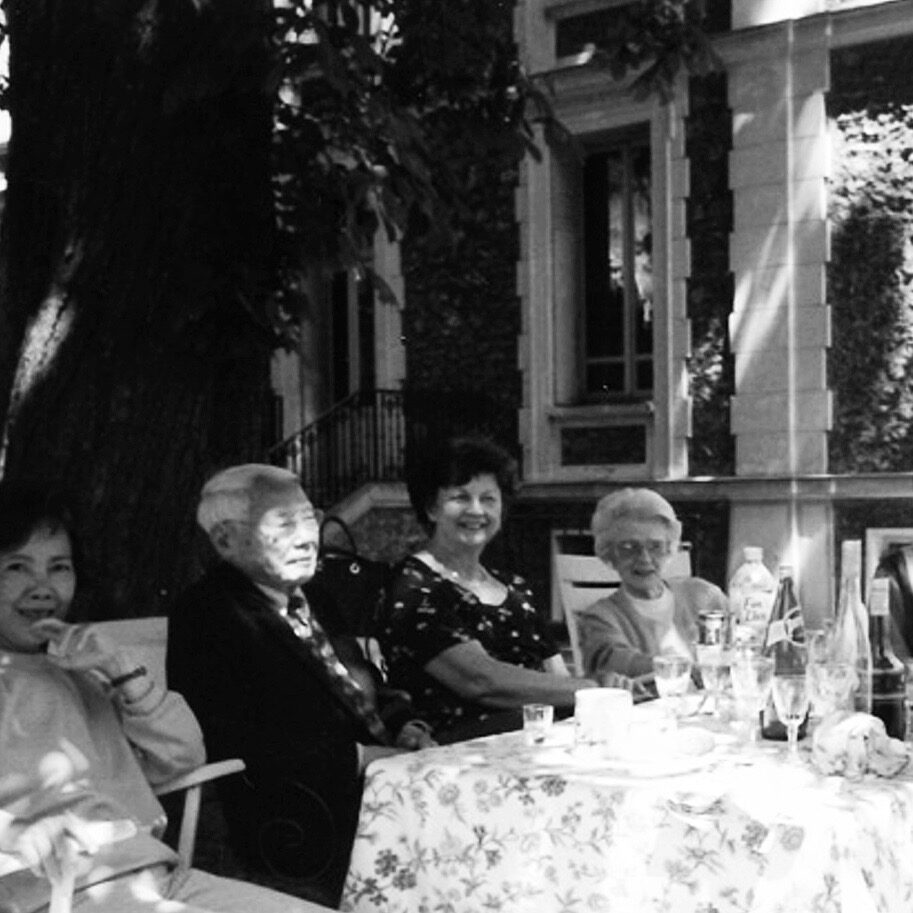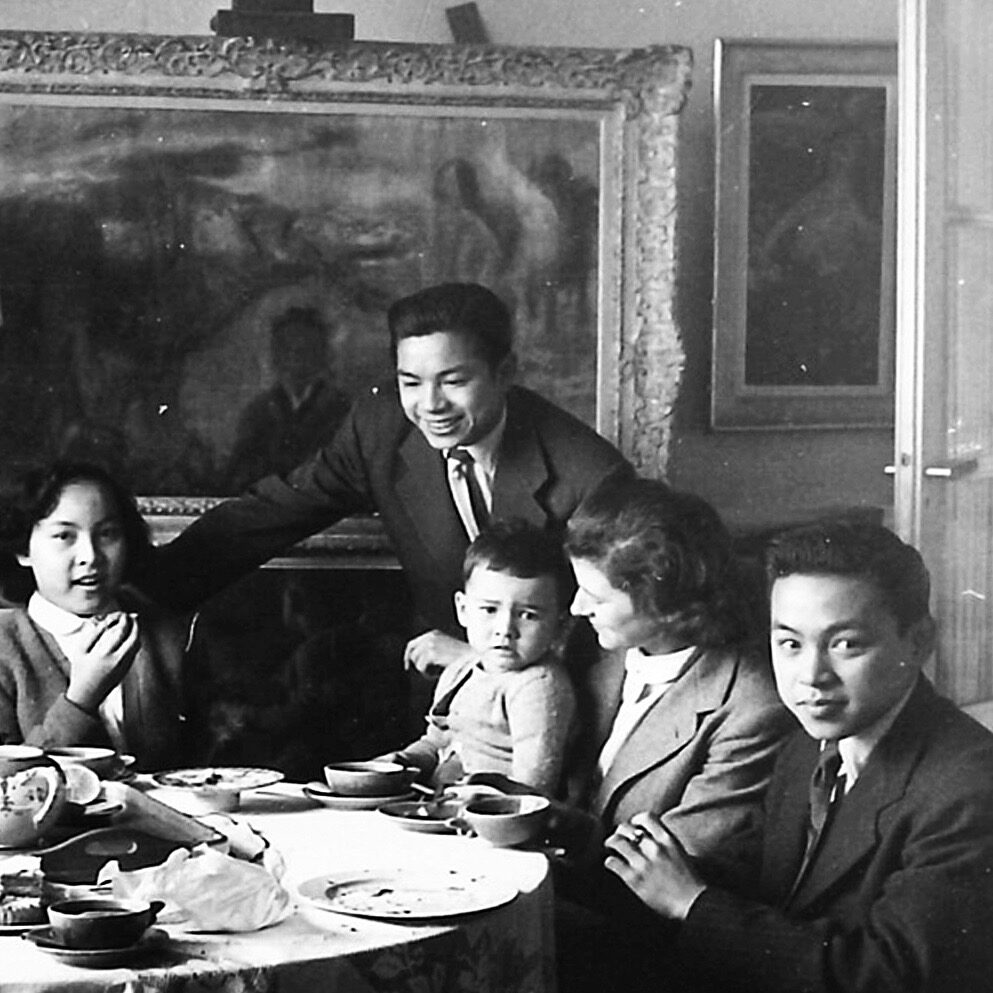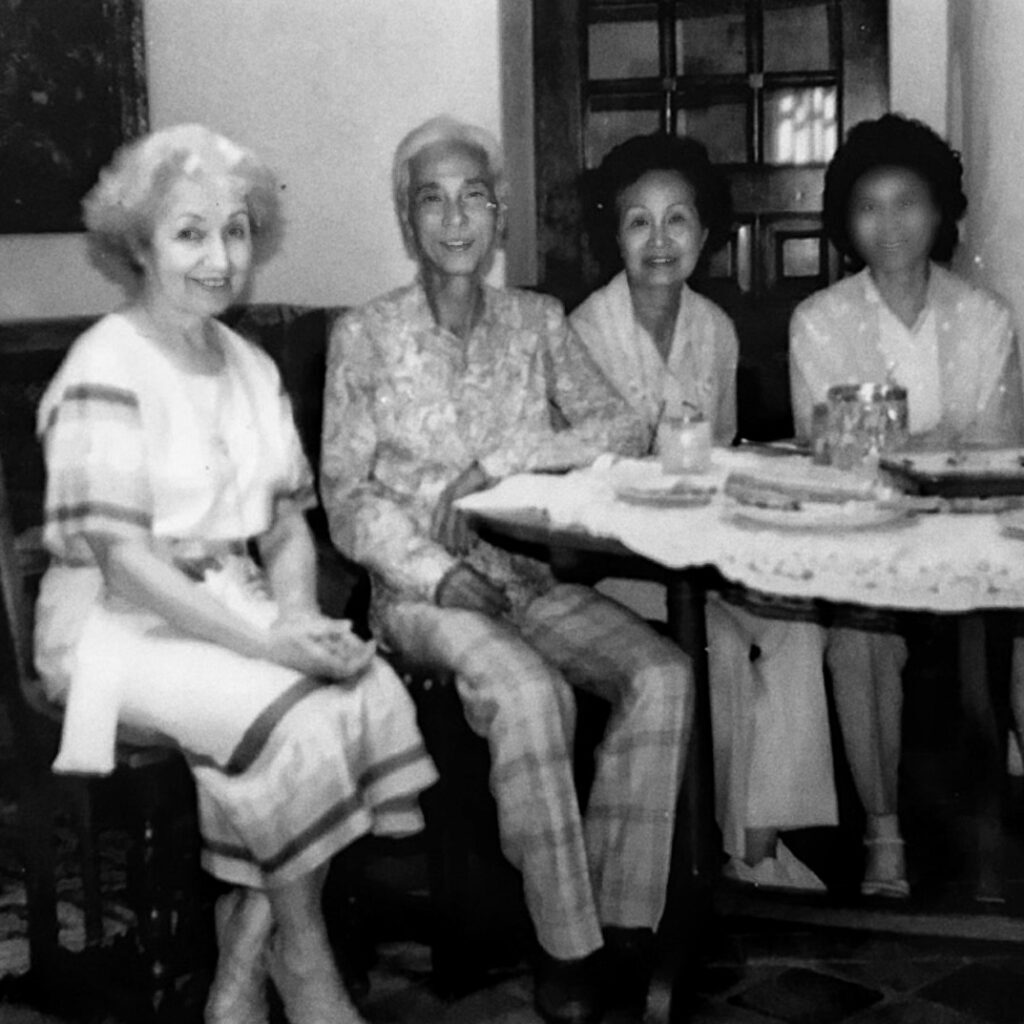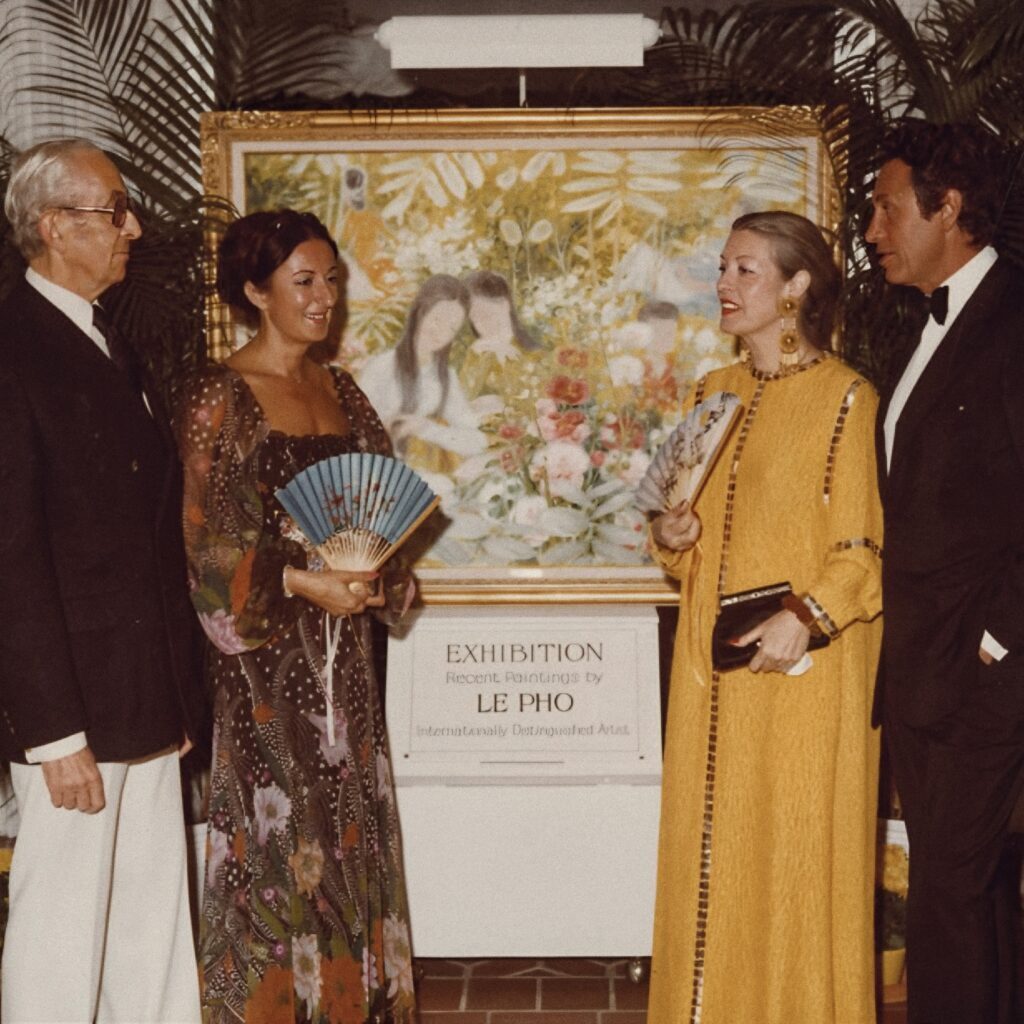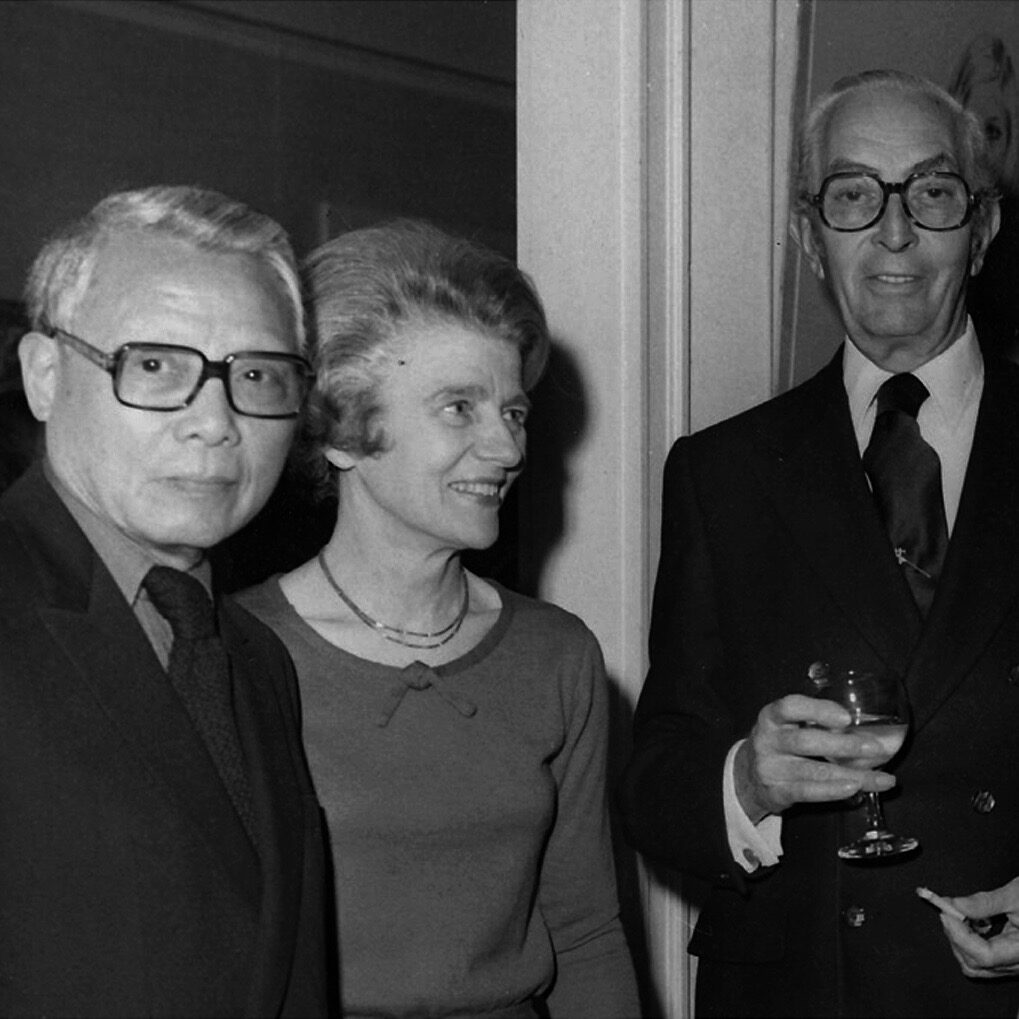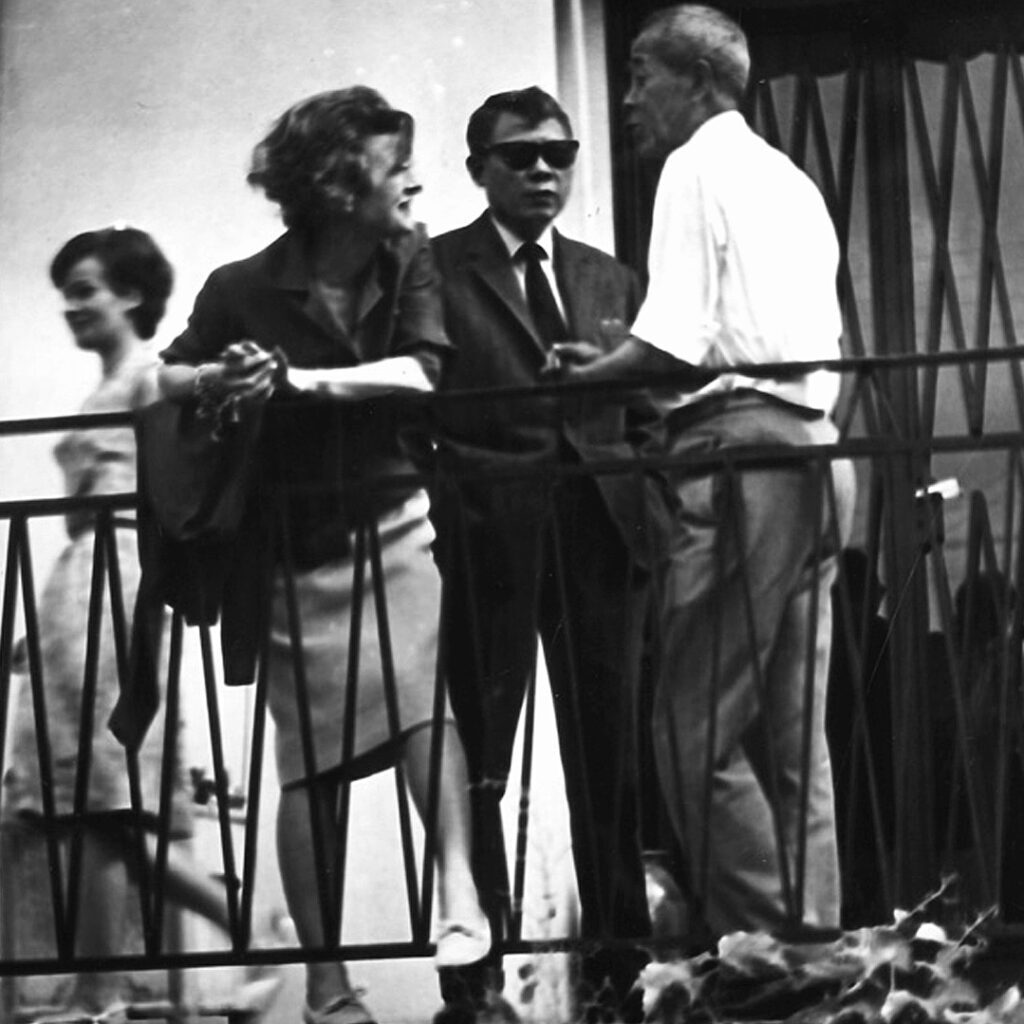Auguste and Orsolla Guglielmi and François Lorenzi and his wife at François Lorenzi's wedding, Hanoi, 1935. Le Pho's Landscape of Tonkin (Paysage du Tonkin), presented as a wedding gift in Hanoi in 1935 to François Lorenzi, son and adopted son of Orsolla and Auguste Tholance, was prized for its excellence, rarity, condition, and historical and sentimental value, the present work was meticulously kept in a French family for years.
Orsolla Guglielmi (1888-1968) was born in Piazzali, a small village in Corsica, and she married Paul Lorenzi in 1908, who at that time got sent to Vietnam in 1905 as a customs officer. Their son was born in Hanoi in 1909 before Paul Lorenzi was killed during the 1914-1918’s war. In the early twenties, the widow Mrs Lorenzi met Auguste Tholance (1878-1938), who arrived in Vietnam in 1900 and was on the way to a promising career as a French public servant. Both widows (he had two children) married and were determined to leave behind the pains to build together a brighter future. They both had a passion for art and a deep understanding of Vietnamese culture. In the twenties in Vietnam, a study of art was in full effervescence: Henri Parmentier had already published his “Inventaire des monuments chams de l’Annam” (Inventory of Cham’s Monuments in Annam), Jean-Yves Claeys was digging Tra-Kieu, Louis Pajot discovered Dong Son, the so-called “Tan Hoa ceramics” was described by Pouyanne. So many initiatives. All these discoveries generate enthusiasm and stimulation, questioned the couple Tholance-Lorenzi. They started collecting ceramics from the Ly and Tran periods and were fascinated by the Cham and Khmer temples et statues.
Orsolla Tholance encouraged governor general Merlin to sign the order dated 27 October 1924 to create in Hanoi a “Fine Art School of Indochina“ under the aegis of Victor Tardieu. As time tells, this institution will become the centre for many great artists during the XXth century.
As time goes, Auguste Tholance proved to be an outstanding public servant. In 1930, he became the Cochinchina governor and was a Résident supérieur of Tonkin from 1931 to 1937. During all these years, Orsolla and Auguste Tholance learned and developed a deep understanding as they met artists, followed their exhibitions, and promoted their work to reach their goal: the acquisition of significant art pieces, including, for example, also by Le Pho an extraordinary oil on canvas “Paysage du Tonkin” (Tonkinese landscape),1937 or “Vendeuse de Bétel” (The betel’s seller), 1931.
Mrs Tholance was the civil godmother of Le Pho, and Le Pho will become the godfather of their grand-grandson.

